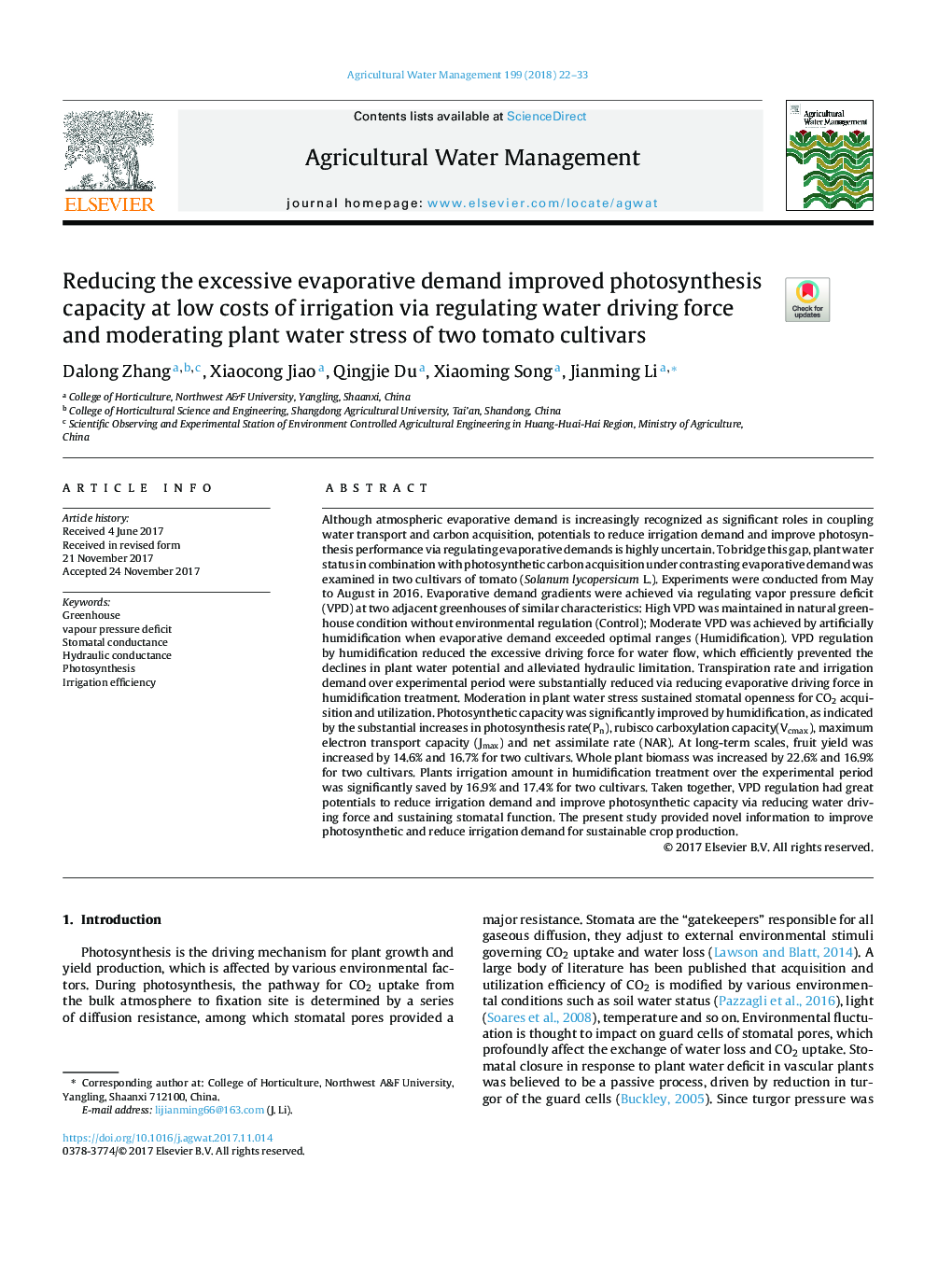| Article ID | Journal | Published Year | Pages | File Type |
|---|---|---|---|---|
| 8873119 | Agricultural Water Management | 2018 | 12 Pages |
Abstract
Although atmospheric evaporative demand is increasingly recognized as significant roles in coupling water transport and carbon acquisition, potentials to reduce irrigation demand and improve photosynthesis performance via regulating evaporative demands is highly uncertain. To bridge this gap, plant water status in combination with photosynthetic carbon acquisition under contrasting evaporative demand was examined in two cultivars of tomato (Solanum lycopersicum L.). Experiments were conducted from May to August in 2016. Evaporative demand gradients were achieved via regulating vapor pressure deficit (VPD) at two adjacent greenhouses of similar characteristics: High VPD was maintained in natural greenhouse condition without environmental regulation (Control); Moderate VPD was achieved by artificially humidification when evaporative demand exceeded optimal ranges (Humidification). VPD regulation by humidification reduced the excessive driving force for water flow, which efficiently prevented the declines in plant water potential and alleviated hydraulic limitation. Transpiration rate and irrigation demand over experimental period were substantially reduced via reducing evaporative driving force in humidification treatment. Moderation in plant water stress sustained stomatal openness for CO2 acquisition and utilization. Photosynthetic capacity was significantly improved by humidification, as indicated by the substantial increases in photosynthesis rate(Pn), rubisco carboxylation capacity(Vcmax), maximum electron transport capacity (Jmax) and net assimilate rate (NAR). At long-term scales, fruit yield was increased by 14.6% and 16.7% for two cultivars. Whole plant biomass was increased by 22.6% and 16.9% for two cultivars. Plants irrigation amount in humidification treatment over the experimental period was significantly saved by 16.9% and 17.4% for two cultivars. Taken together, VPD regulation had great potentials to reduce irrigation demand and improve photosynthetic capacity via reducing water driving force and sustaining stomatal function. The present study provided novel information to improve photosynthetic and reduce irrigation demand for sustainable crop production.
Keywords
Related Topics
Life Sciences
Agricultural and Biological Sciences
Agronomy and Crop Science
Authors
Dalong Zhang, Xiaocong Jiao, Qingjie Du, Xiaoming Song, Jianming Li,
